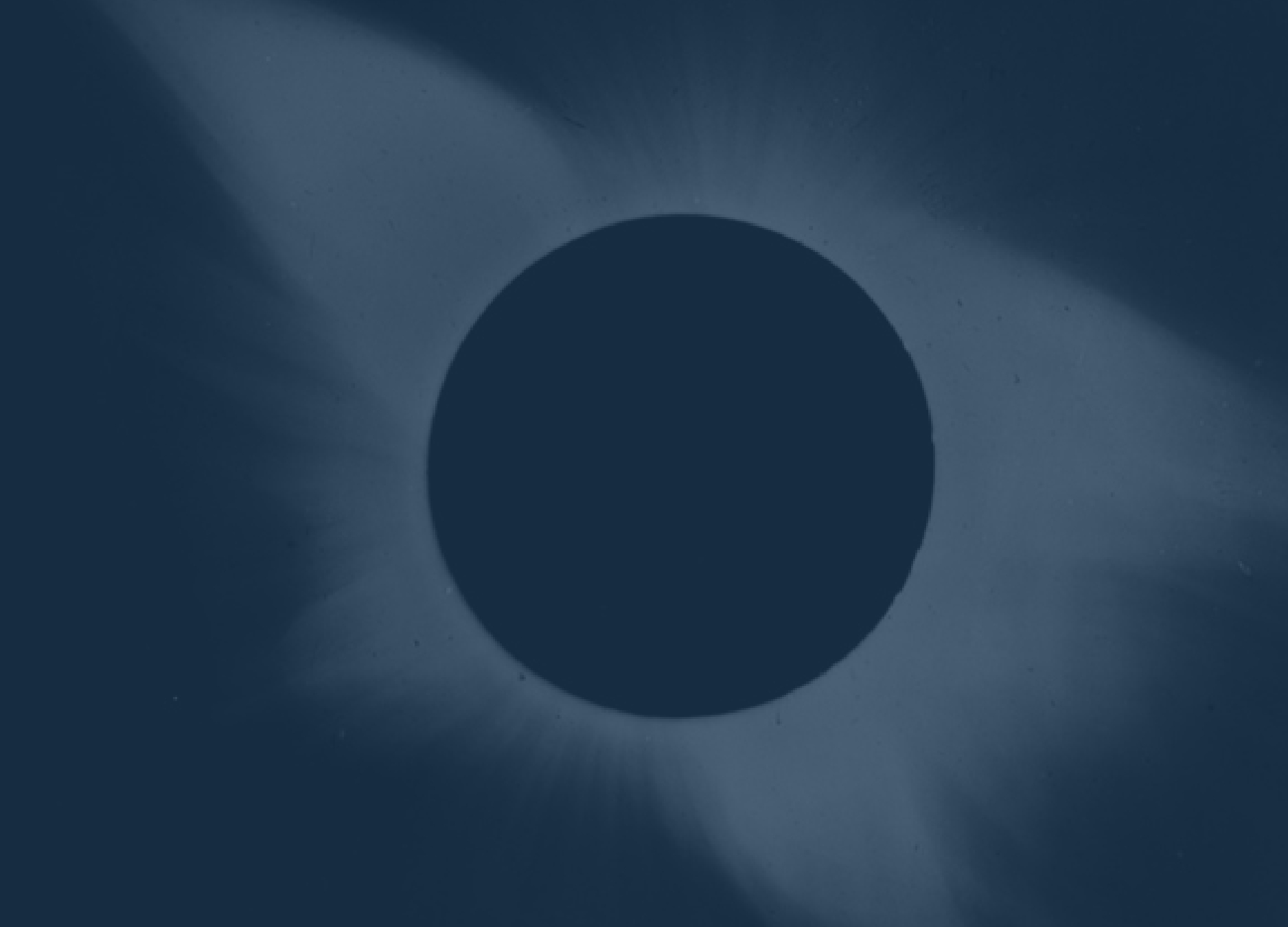
Solar Eclipse Resources
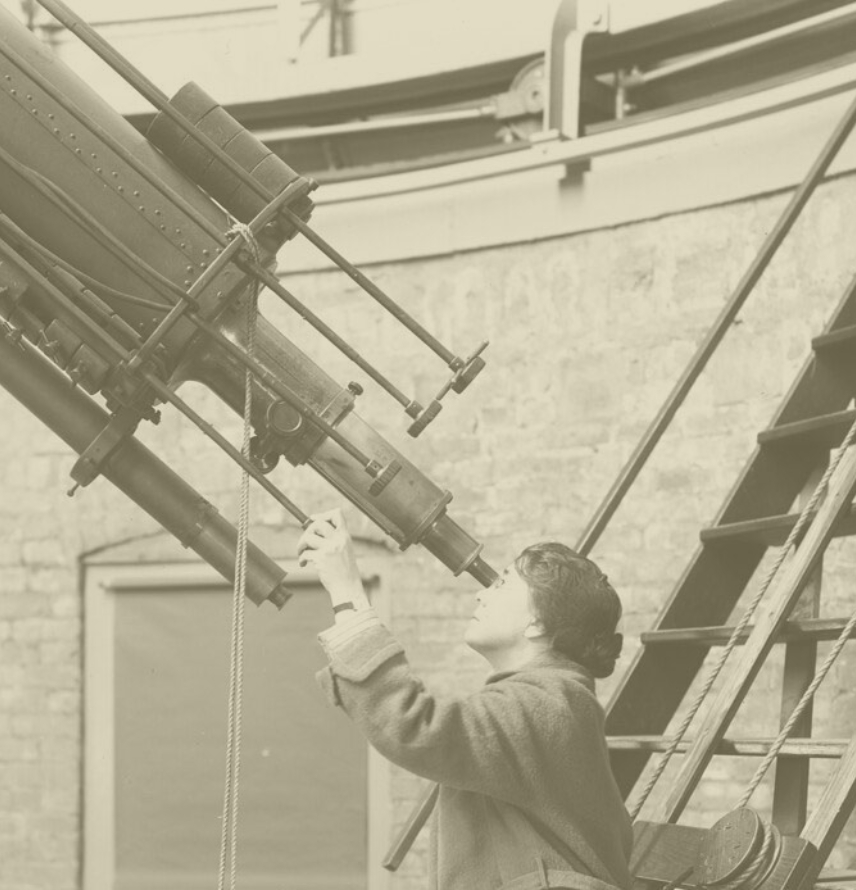
eclipse (noun) :
passing into the shadow of a celestial body
Solar eclipses are deeply rooted in Yerkes’ history.
During the 20th century, Yerkes astronomers traveled the world to observe solar eclipses first-hand. The first solar eclipse expedition on May 28, 1900 was led by the observatory’s founder George Ellery Hale, where he and a group of astronomers traveled to North Carolina to observe a total solar eclipse. In total, Yerkes astronomers went on at least ten total solar eclipse expeditions between 1900 and 1952, providing invaluable data to test fundamental physics including Einstein’s Theory of General Relativity, and deep insights into the atmosphere of our nearest star – the Sun.

April 8, 2024
The path of totality is relatively close but does not pass through Williams Bay, WI on April 8, 2024. Because experiencing a total solar eclipse is unlike any other astronomical event, we at Yerkes encourage everyone who is able to travel to a location in the path of totality. We recommend using this Interactive Google map of the United States to identify your destination for the total solar eclipse. If you decide to stay local, please note that this will be a partial eclipse as viewed from Williams Bay, WI, with about 90% of the Sun’s light blocked by the Moon.

Image credit:
NASA
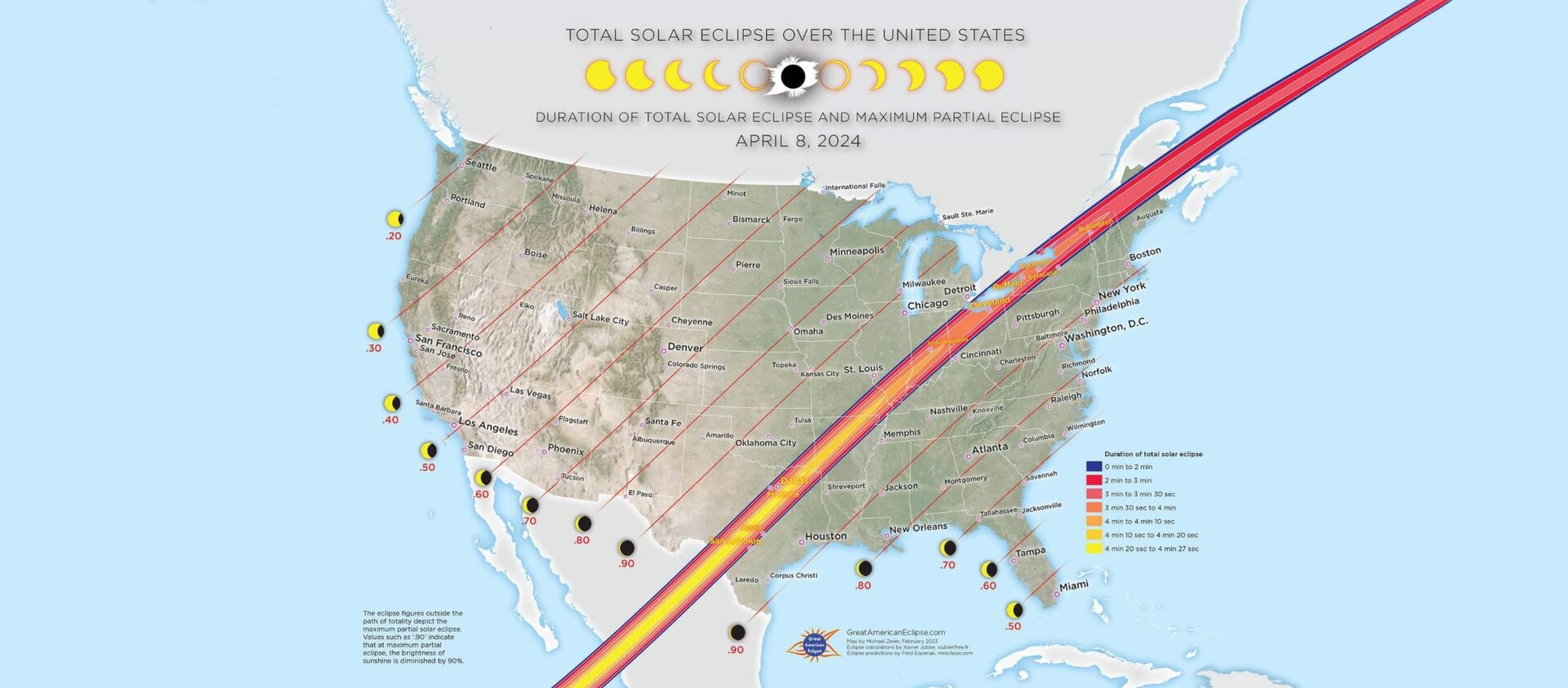
Frequently Asked Questions
What is an eclipse?
An eclipse occurs when some or all of the light from one celestial object is blocked by another celestial object passing between it and an observer. In the case of a solar eclipse, the Moon passes between the Sun and Earth, blocking the light from the Sun as seen by an observer on Earth.
Credit: NASA’s Goddard Space Flight Center
One amazing coincidence of our solar system is that the Moon and Sun, as seen from Earth, are approximately the same angular size. This means that they take up the same amount of space in Earth’s sky, allowing the Moon to perfectly block out light from the Sun when the two are aligned.
What will the eclipse look like in Williams Bay, WI?
Though we are close to the path of totality in Williams Bay, we will experience only a partial eclipse. About 90% of the Sun’s light will be blocked by the Moon at peak eclipse (around 2pm CT).
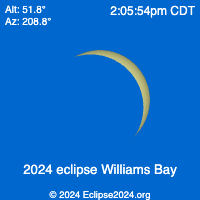
Maximum eclipse during the April 8, 2024 solar eclipse in Wisconsin will occur just after 2pm CT, with about 90% of the Sun’s light blocked by the Moon.
How can I safely view a solar eclipse?
First things first – it is not safe to look directly at the Sun without special equipment. You may have heard there is a caveat to this during a solar eclipse – while it’s true that you can look directly at a total solar eclipse during the few minutes that the Moon is completely blocking the light from the Sun (totality), you generally should not look at the Sun with just your eyes during a solar eclipse.
For the April 8, 2024 total eclipse
With the exception of the few minutes of totality, you should always use protective measures while observing this eclipse.
Here are some options for safely observing the Sun during an eclipse:
Eclipse glasses
These special glasses use solar filters that block out more than 99% of the Sun’s light, making it safe to look directly at the Sun while wearing them. It is crucial that you buy these from a trustworthy source, as using counterfeit or damaged glasses could cause permanent eye damage. The American Astronomical Society has compiled an extensive list of approved suppliers of eclipse glasses for your reference.
Pinhole observers
Projecting the Sun’s light using a pinhole observer is another safe and easy way to view a solar eclipse. Check out these instructions for how to build your own pinhole observer with common household items.
Specialty filters and telescopes
Though this option is a bit more expensive, you can purchase your own specialty filters to safely view the Sun with a telescope or binoculars. All of the filters block out at least 99% of the Sun’s light, making it safe to look directly at the Sun using your instruments. Some filters only let a certain wavelength, or color, of light through, allowing a unique view of different components of the Sun. The American Astronomical Society has also compiled an extensive list of recommended filters and telescopes for your reference.
What are the different types of solar eclipses?
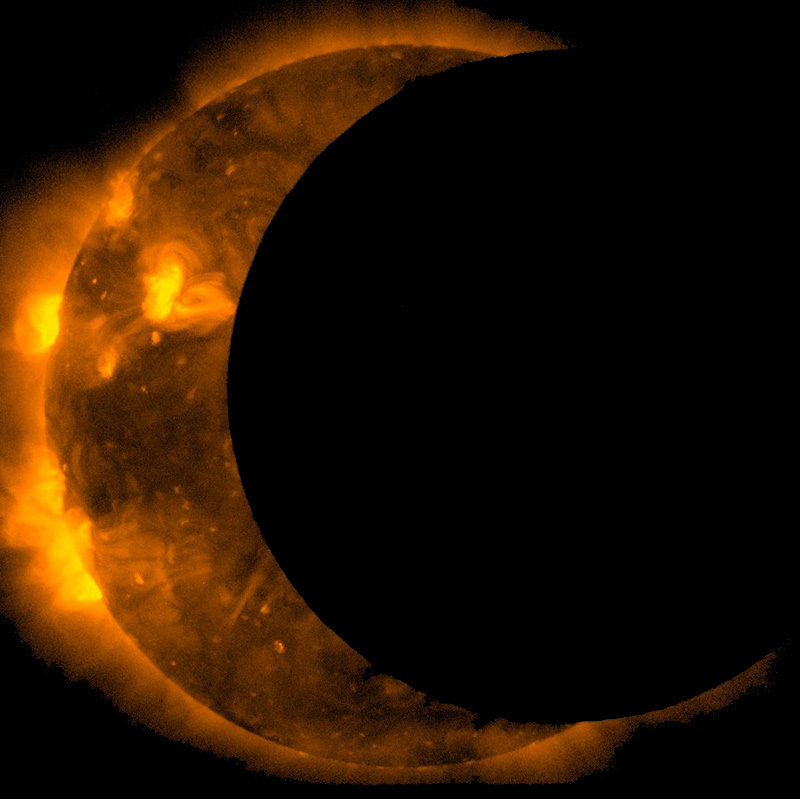
A partial solar eclipse occurs when only some of the Sun’s light is blocked by the Moon. This happens when the Sun and Moon are not perfectly aligned when viewed from Earth.
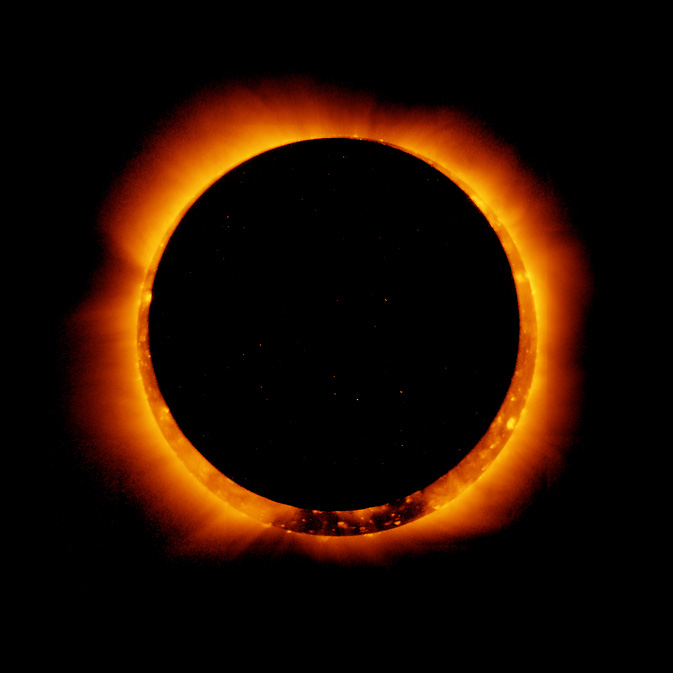
An annular solar eclipse occurs when the Moon and Sun are aligned as seen from Earth, but the Moon is at the farthest point from Earth in its orbit. Because the Moon appears smaller when at its farthest point from Earth, the Sun is not completely covered during an annular eclipse. This creates the characteristic ring around the Sun that is observable during an annular eclipse.
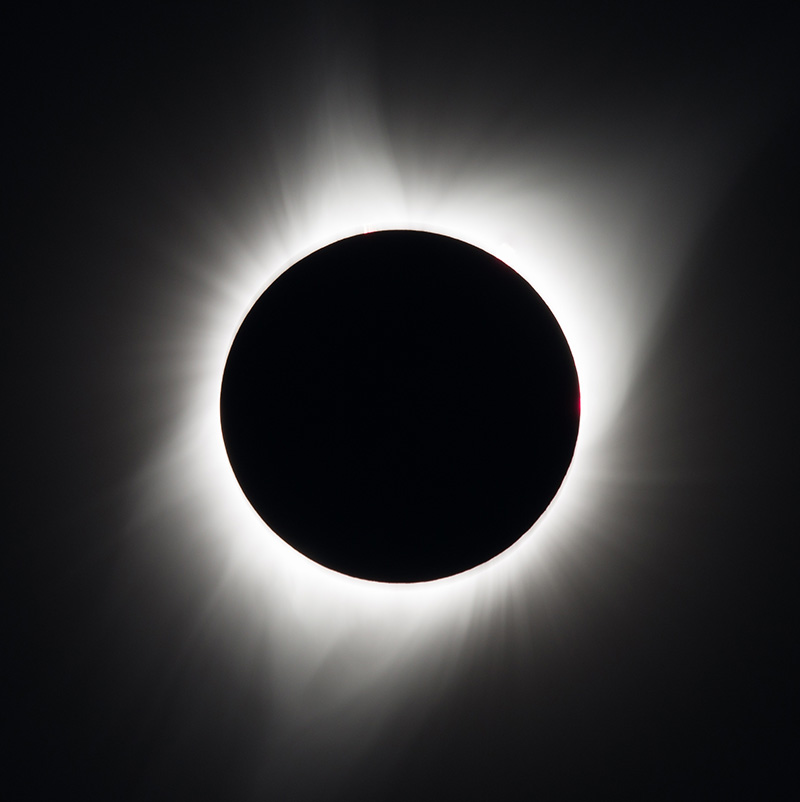
A total solar eclipse occurs when the Moon and Sun are aligned as seen from Earth, with the Moon completely blocking the light coming from the Sun’s surface. Because Earth’s surface is curved, some solar eclipses can shift between annular and total depending on the observer’s location. An eclipse that shifts between annular and total is known as a hybrid solar eclipse.
How rare are solar eclipses?
It’s a common misconception that solar eclipses are rare. Partial solar eclipses happen at least two times a year, and the most sought-after eclipse – a total solar eclipse – happens approximately once every 18 months. Although solar eclipses happen quite frequently, the location an eclipse is visible changes from eclipse to eclipse. This is what gives solar eclipses a sense of rarity; observers often have to travel great distances to be able to experience an eclipse.
Contact us
Use the form or the information below:
-
Yerkes Observatory
373 West Geneva Street
Williams Bay, Wisconsin 53191 -
Planet Earth
Latitude: 42.5704° N
Longitude: 88.5563° W
Keep Yerkes open for a new generation of explorers
Help us continue
the legacy.
More than a century ago a determined founder, masterful architect, skilled trades workers, diligent engineers and inventive entrepreneurs built Yerkes. Visionary scientists put it on the galaxy’s map. A dedicated group of locals saved Yerkes for future generations. And now we look to you. Please consider becoming a contributor and friend of Yerkes Observatory. Your participation means everything.
Want to talk about an estate or legacy gift? Want to see if you can help us with your time as a volunteer?
EMAIL US